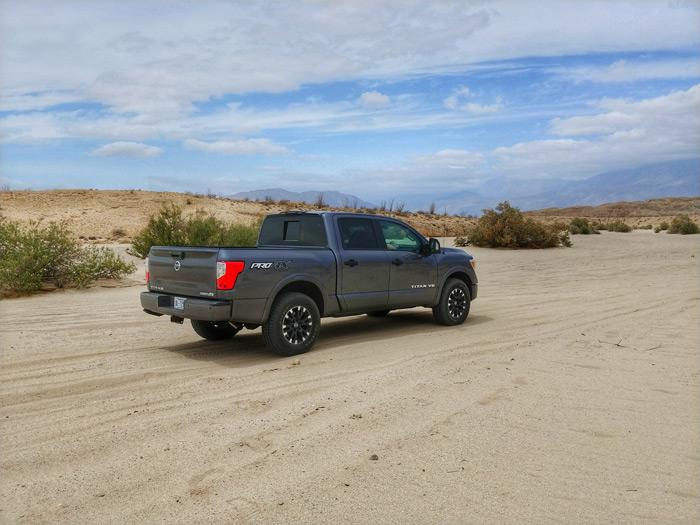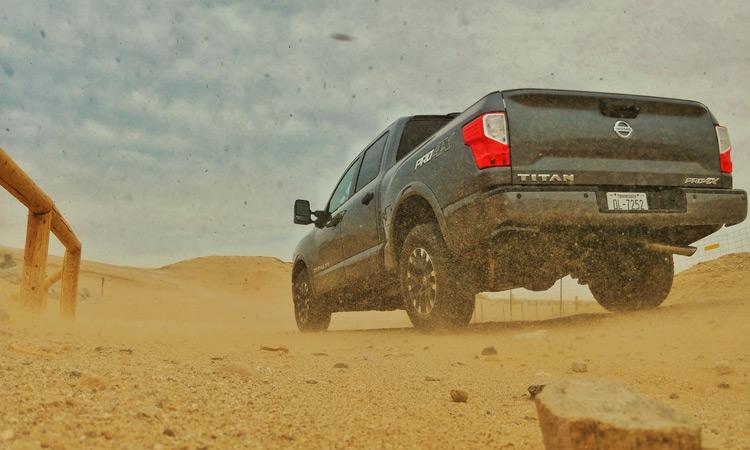The desert is an amazing place to explore - on road as well as off. Despite the fact that some people might think it is dead and desolate, this is an environment that is incredibly dynamic. Dangers as well as beauty can pop up at any moment and disappear just as quickly. One of these dangers is sudden dust storms or sandstorms. They are most common in the deserts of North Africa and the Arabian Peninsula but also in parts of the United States including California, Nevada, Arizona and New Mexico.
While American sand storms are often smaller in size than what might be experienced in the Saharan Desert, the danger to motorists can be similar. Here's what to do if you find yourself in a sand storm.
My first experience in a sand storm was earlier this year in Baja but then again a few months ago while doing some off-road driving in the Anza Borrego desert. Apparently dust storms aren't as rare as I thought! Nissan had loaned us their Titan Pro4X to test out and It was supposed to be a nice day full of fun and adventure in one of my favorite full-sized trucks.
The Titan Pro4X is super comfortable for long road trips and while the suspension isn't as tuned of aggressive off-road driving as some others out there it is a lot of fun to drive on some of my favorite trails through the Anza Borrego Desert. For instance, it has those awesome Nissan "Zero Gravity Seats" that can be both heated or cooled, a great sound system, and all the modern tech you'd expect from an SUV. However, it's also got a locking rear differential to help avoid getting stuck, Bilstein off-road performance shocks, and solid all-terrain OEM tires. With the ability to tow more than 9,200 pounds it is perfect for a weekend getaways where you'll be hauling a couple ATVs or maybe a camper ready for the whole family. However, you can still explore some trails in comfort too.
Unless ... you get there and the wind is blowing up the sand, creating a dust storm. While I have considerable experience driving in different conditions, drifting sand that is blowing hard enough to hurt my skin is something that I try to avoid!

Luckily though, most dust storms in the United States tend not to last that long and are often localized.
Why Are Sand and Dust Storms Dangerous For Drivers?
Like any storm, they can pop up suddenly. In our case, the wind picked up and suddenly skies turned from blue to cloudy. According to my weather app, the winds reached more than 40 mph in the area. Our trail quickly went from "fun" to dangerous because of a combination of inability to see clearly, wind buffeting the truck, and drifting debris that created piles of sand just waiting to ruin our day. Plus, the wind was also scouring other parts of the trail exposing obstacles and preventing us from seeing them clearly.
If we were on the highway, we would have suffered from those same conditions - but also had to deal with traveling at high speeds and other drivers around us.
If you live in the desert southwest region of the United States - especially Nevada and Arizona, you've probably encountered this. They occur most commonly between May and October with the most intense storms happening in late summer months around monsoon season. Compared to other areas of the world, our dust storms are usually much smaller events with shorter durations. However, the Sonoran desert between Phoenix and Tucson is the only part of the United States that has experienced a true "haboob" - a fast moving dust storm with winds ranging from 50-60 mph that travels across the desert looking like a cloud rolling along the desert floor.
 Example of a sandstorm haboob.
Example of a sandstorm haboob.
What To Do If You Encounter a Dust Storm While Driving?
There's not much that you can do to avoid a dust storm except to check weather reports before you travel and make sure you are prepared for whatever might happen. This means having extra water, towels, plenty of gas, and snacks as well as an emergency light at very least. Even then though, dust storms - like many other extreme weather events - can happen quickly if the conditions are right for them to form. If you find yourself stuck in a dust storm though, here's what you should do ...
Leave Your Car Running - There is no reason to turn your car off in most instances. Your comfort is important and the filters on your vehicle will eliminate most dust and sand particles.
Turn Your Lights and Flashers On to Increase Visibility - Drivers follow lights to safety. You want to make sure that your lights are on so that a car in back of you doesn't hit you.
Pull Over to a Safe Spot Where You Can Avoid Being Struck By Other Motorists - If you can exit the highway entirely, that is the ideal situation. However, if you can't exit the road during a dust storm then pull as far off of the road as possible, while making sure to avoid ditches and obstacles that might prove to be challenging to exit once the storm is over. This is especially important since monsoonal rains often follow late season dust storms and that can lead to flash floods and mud.
Close Your Car Vents, Lower the Fan, and Turn it to Recycled Air - Your car has filters that will most likely be able to handle any dust but you'll want to avoid pulling too much into the system anyhow.
Keep Your Car Radio On and Tune To a Weather Alert Channel - Stay alert to traffic and weather updates via radio and / or mobile updates. This will help you to know how long the dust storm will last and help reduce the feeling of isolation that can occur when all you can see is swirling sand and dust all around you.
Once the winds have died down and visibility has improved to at least 300 meters then you should do a quick check of your gauges to ensure that the car is functioning properly and then proceed back onto the road and drive cautiously. The dust storm may have piled debris and sand drifts into the road that you'll want to avoid.
Check Your Car For Damage and Debris After a Dust Storm
After a dust storm, make sure check your vehicle for damage and clean out dust and sand that may have accumulated in areas of the car that could cause issues.
This includes checking the windshield and paint of the vehicle to look for scratches as well as dents or cracks that might have been caused by airborne pebbles and other debris. Additionally, you'll want to check the undercarriage, radiator, front grille, and engine compartment to ensure that sand hasn't piled up there as well. This is especially important if rain followed the dust storm and formed mud that has now caked and dried onto parts of your car that need to be able to move or take air in. You should also examine your air hoses and clean or consider replacing any air and potential fuel or oil filters too. The dust storm is likely to have overloaded these intake filters compared to their normal use.
In most cases, this is a simple visual check but if you have doubts, you should always see a good mechanic to do a comprehensive inspection.
